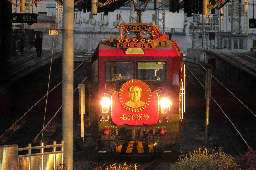Real question, I’d like to hear takes.
For years I lived in the same place so I knew how to get around. I also got around on bike/foot/transit. I rarely needed a navigation app.
But I recently moved to a new area, and the logistics of the move required me to get a car. With all the new places to learn, I started leaning on google nav more.
But every time it makes a route for me, it seems like it’s fighting against city planners. It will constantly direct me through little 1 way streets through residential neighborhoods if it thinks it can save .1 mile or 30 seconds.
As a concrete example, in my neighborhood the city planners have set up one road as the obvious exit, all the other roads have no lights or restrictions on turns. Navigation never uses that route, and prefers darting across lanes of traffic and turning during times it’s not allowed.
My partner and I joke about how many uturns it suggests. There’s a route I sometimes take where it suggests I make a 270 degree turn off a highway exit across 4 lanes of traffic.
In short, google drives like an asshole. It makes erratic decisions. And it routes people down roads that aren’t meant to carry lots of traffic.
I’m sure there’s some counterargument that this kind of navigation is load balancing and more efficient. But to me, I feel it makes things unpredictable and less pleasant to exist in a neighborhood.
is there any consensus on this stuff?


I don’t think it’s had time to really shape the actual structure of cities much yet, but I do think in plenty of localized areas like yours, it has made the traffic flows worse/more annoying. I’ve seen it mostly in exurban/rural areas around me, it occasionally will just jam up a side road with traffic, because of some minor slowdown on the main highway.
Honestly my theory, inspired by @[email protected]’s comment about how it pretty much works as intended in houston, is that it was designed for modern american cities and it probably has some unintended consequences on how it directs people in older more complex cities that aren’t just built for cars to go zoom more fasterer
my smartphone died recently and I haven’t replaced it with another apple/android, and I’ve been realizing pretty fast both my strengths and weaknesses navigating my own city. I never really liked relying on navigation for around town use when I should mostly know where I’m going, but I did use it when going somewhere unfamiliar or in a hurry before, and that resulted in some areas where I really just didn’t know the details, especially of the side streets, which I’m now learning (mostly on my bike), and some newfound strong feelings:
Google also doesn’t always know addresses, when I was doing drywall it didn’t know new addresses (cause they’re new) so I still had to drive like it was 2010 for me.
Yeah occasionally I’ve seen that. Its not like there’s an alternative that’s any better on that front though.
OpenStreetMap is spotty at best about having any addresses at all, paper maps are always going to at least a little bit out of date, etc.
and even the postal service can sometimes be slow to get new places listed (I had a friend live in a relatively new apartment building and they couldn’t put in a change of address because the building wasn’t in their systems yet.)
I guess the “alternative” that fixes this is a sensible street grid where you can tell what block an address is on by the numbering. Much of my city has this and it’s very nice